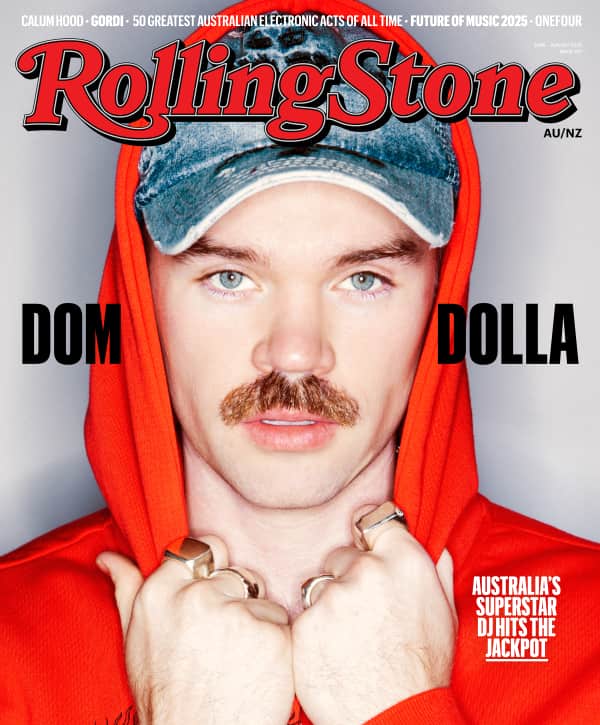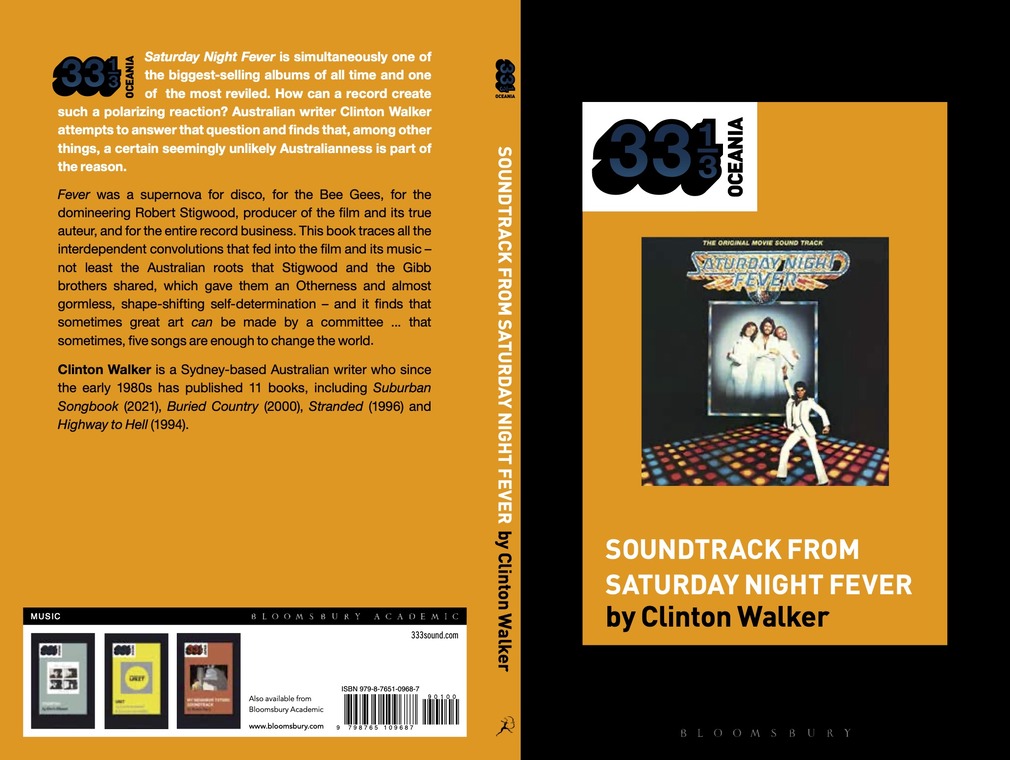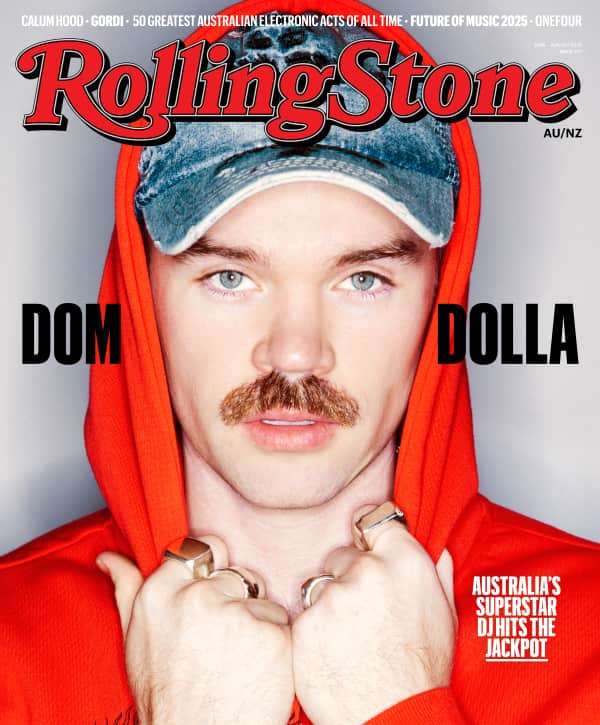OUTSIDERS LOOKING IN
It’s not as if they could have waved to each other as they crossed paths in opposite directions, but they came close. Robert Stigwood left Australia — Adelaide — in 1955 when he was 21 and headed off along what would later be dubbed the hippie trail, by ship to India and thence overland to London, where he thought he might try to get into theatre somehow. The Gibb family arrived in Brisbane on September 1st, 1958, the day Barry turned 12, and the Bee Gees started playing semi-professionally the following year.
The Gibbs were New Australians, as government-speak preferred it over ‘10 Quid Tourists’ or ‘10 Pound Poms’, part of a massive wave of post-war immigration designed to help re-invent or literally build a new Australia. Stigwood was old Australia, a fifth-generation son of neither convicts nor turnkeys but free settlers. It was not-so-parallel narratives until Stigwood and the Gibbs, including parents Hugh and Barbara, intersected in London in 1967 and were forever intertwined thereafter. They would form an ersatz, extended family, Aussies abroad, and it was a union that bonded them as fellow semi-strangers in a strange land and bonded them because they shared so much in common with their respective Australian roots.
Imbued with a certain wry, sideways Australian sensibility, everything they did together had a subtle but distinctive difference in a pop scene dominated by the Americans and British. Routinely described in terms of outsiders looking in, it’s no great stretch to ascribe this to the Bee Gees’ origins off the beaten track in Australia. Which, when put together with Stigwood’s characteristically albeit untypically mild-mannered Australian rebel streak or larrikin spirit, made for so much more than the sum of its parts.
THE MIAMI SOUND
Where did Saturday Night Fever begin? It may not have been in Brooklyn, and not even in the London suburb of Shepherd’s Bush, where Nik Cohn first met the Mods that formed the basis for the characters in his New York magazine article. Maybe it actually began in Miami. Because it was in Miami that the Bee Gees found their disco sound, and that was what rebirthed their ailing career and would underpin Saturday Night Fever.
The principles that underpinned Saturday Night Fever were in development for more than a decade before it happened. Those principles were not just artistic or creative ones but also commercial ones, corporate ones, and without both sides of the coin, Fever would not, could not, have come about. It was only after the Bee Gees had gone to Miami in 1975 and found a new sound, their disco second coming, and after RSO (Robert Stigwood Organisation), in 1976, had completed the edifice of a business structure that gave it almost total independence and total control, albeit with major financial resources, that something like Fever became at all possible.
Love Music?
Get your daily dose of everything happening in Australian/New Zealand music and globally.
When the Gibb brothers washed up in America’s Sunshine State at the start of 1975, after years of living in London but also wandering through Spain and then back again to their birthplace on the Isle of Man, Barry was nearly 30, the twins 26, and they were lost and floundering.
When they went to Miami, it wasn’t to go disco, even if the Miami Sound was by then taking the world by storm in the form of George “Rock Your Baby” McCrae, KC and the Sunshine Band and other acts on local label TK Records. They went there to go into the same studio that stablemate Eric Clapton had used, Criteria, Atlantic Records’ headquarters in the South, to record the album that brought his career back from the brink, 461 Ocean Boulevard. The Bee Gees went there to try and repeat Clapton’s performance, to make a comeback (an ugly word that no one used), to find something, anything, to revitalise their career, under the gently guiding hand of brilliant Atlantic house producer Arif Mardin.
And what they found was just that — what they didn’t know lay in wait for them. They found a new voice — the falsetto! of course, a long-practiced technique in European, African and American singing alike — which Arif Mardin pulled out of Barry, who didn’t know he’d had it inside him all along. They found a new sound — in a word, disco — which was due equally to Mardin’s cajoling as to their having finally assembled a truly great road band behind them.
What the Gibbs also found was the home they’d been looking for ever since they’d left Australia nine years earlier. They liked Miami so much, they never left. Initially, they liked it because it reminded them of the Gold Coast, the Queensland coastline strip of resorts where they’d lived in 1962. As well it might, since Surfers Paradise, the heart of the Coast and the Gibbs’ address, was itself modelled on Miami, after the Melbourne developer Stanley Korman had visited the Florida hub and built his first Chevron Hotel and Estate on reclaimed swampland at Surfers in the late 1950s. The Gibbs lived on Chevron Island amid man-made canals. For them, Miami was back to the beach, back to the sunshine and balmy, barefoot nights — back to a future where the world was an open book . . .
They liked it even more when it quickly became clear that it was energising and inspiring them into a whole new phase of life and art; when the first single from the sessions — “Jive Talkin’”, one of the two Bee Gees back catalogue items to get recycled into Fever — was released and went to Number One; and when its parent album Main Course was released and became their most successful album to date. Now they were finally able to sell albums as well as singles. And it was the key that unlocked a door.
Miami might not be as legendary a Deep South music centre as New Orleans, Nashville or Memphis, but if there was a birthplace for disco, Miami is as good a contender as any, including the fabled gay venues of New York that seem to have hogged the history. And if disco was the music that gave life to Saturday Night Fever as surely as pomp-rock gave life to Tommy — if Fever was a disco opera, regardless of whether it was ushering disco in or out — it’s necessary to understand where disco came from and how it came to fuel the Bee Gees’ second coming.
The larger Latin influence in Miami (one of the biggest Hispanic cities in the world) pushed it to a whole new sonic stew, or gumbo, called disco. It was a sound reverberating around the city, not just inside studios like Criteria and TK, the latter the home of Henry Stone’s label of the same name. It was a vibe, a tang that was in the air, wafting in on the sea breezes from the Caribbean and emanating out of the luxury hotels, cruise ships and barrio nightclubs.
For the Bee Gees, it wasn’t a bandwagon to jump on. It wasn’t contrived or cynical, but organic and natural, as if the zeitgeist just sort of gathered them up. Arif Mardin as well as Miami together was a master-stroke. It got into their system and got into their music, and it got them back on the charts and on the path leading to Saturday Night Fever.
IT WASN’T REALLY ABOUT LISTENING TO WHAT WAS GOING ON ON THE RADIO
Miami was Arif Mardin’s home turf. It was tropical and salty, like Surfers on steroids, and Criteria was a place that turned out hits; it was a proverbial hit factory. At the start of 1975, though, the mood was still uncertain. The moot point remains, what exactly was the brief the Gibbs got? Put the pathos behind you? Get rid of the downer ballads? Stop trying to ape the Beatles and start listening to Stevie Wonder? Just kick it up a bit? Catch up on contemporary radio? “No, it wasn’t really about listening to what was going on on the radio,” Barry said at a function at Criteria in 2010 to pay tribute to Arif Mardin, who died in 2006. “It was really about drawing ourselves away from the sense of, umm, the Beatles? The psychedelic situation, trying to transcend that. And we loved the Stylistics, groups like that, Frankie Valli, The Commodores, Delfonics, Hall & Oates and other groups like that.”
The Bee Gees, in fact, always claimed they knew nothing about disco when they first went to Miami. They thought they were veering towards what they called R&B, which they always loved and to which they had given so many great songs as covered by singer’s singers like Nina Simone, Etta James, the Staple Singers, Al Green, and Percy Sledge. In that, they were already almost honorary blue-eyed soul men, who wrote songs that sat at that sweet spot where they could go in any direction, both kinds of music, country and soul. It’s now an acknowledged multi-racial genre, country-soul, an ancestor of yacht-rock, and that’s why the Gibbs scored so many covers by artists both Black and white (Elvis, Janis Joplin, Eric Burdon, Gram Parsons), and it’s why the shift to disco was so easy and successful and almost seamless; why they had so much purchase on disco, because their take on it had such strong internal logic and roots.
A Bee Gees record you could dance to? Unthinkable only 18 months earlier. And elevated, distinguished even further, by the songs themselves. This was a great thing that the Bee Gees brought to disco, to the dance floor. Many, maybe most disco songs were party songs, dance songs, obviously. But it was because the Gibbs’ songs remained at best Bloody Genius, they went beyond just good times. And in a way, this added another dimension of the Latin — the quality of saudade, bittersweetness, that is a characteristic of bossa nova, something else again that may have just drifted in on the ocean currents from Brazil in the south.
FEVER RISING
There is a major myth that the first the Gibbs heard about Fever was when Stigwood phoned them at the studio and said something like, ‘Drop everything, I’ve got this soundtrack I want you to do’; but it cannot be true. A number of accounts put “Stayin’ Alive” — under its original title “Saturday Night” — germinating in Bermuda. Bermuda because Stigwood was in the process of moving to the tiny Caribbean island tax haven, and Barry visited him there, in his new rented mansion, towards the end of 1976. Barry went there to rendezvous with his baby brother Andy and his new bride Kim, with Andy in the throes of launching his recording career through RSO. Barry wrote a couple of songs with/for Andy and, with Stigwood enthusing about the Saturday Night film option he’d just bought, Barry started on a song by that name. He was also already toying with a few other songs for a new Bee Gees album, including “More Than a Woman” and “If I Can’t Have You”. One of the few certainties is that the five new Gibb songs that did go into the film — the five songs that made up Side One of the eventual soundtrack double album, in the following order: “Stayin’ Alive”, “How Deep Is Your Love”, “Night Fever”, “More Than a Woman” and “If I Can’t Have You” — were a huge part of what made the film what it was. I don’t think that before or since, a film and its music — or a music and its film? — spoke so fluently to each other, as architects like to say about buildings.
Another myth says that when Stigwood first heard the demos of the five new songs, he waved the cassette around and declared it contained three Number One singles. The myth comes complete with the rejoinder that he was wrong. There were four Number Ones there!
STAYIN’ ALIVE
“How Deep Is Your Love” wasn’t just the first of four Number One singles from Fever; it was also the first in an extraordinary string of six consecutive US Number One singles the Bee Gees would release in eighteen months between Fever and 1979’s Spirits Having Flown, a record matched only by the Beatles and eventually surpassed only by Whitney Houston.
Add to the Bee Gees’ three Number Ones in 1978 the other four Number Ones the Gibbs wrote and/or produced during the year (“(Love Is) Thicker Than Water” and “Shadow Dancing” for baby brother Andy, Yvonne Elliman’s version of “If I Can’t Have You” from Fever, and Barry’s “Grease”), and seven Number One singles in a calendar year is a record that no one songwriter/producer has ever rivalled.
People are still dancing to “Stayin’ Alive” and “Night Fever” and “Jive Talkin’” and they may never stop. Said Pete Waterman, the English DJ-cum-producer who, as part of the Stock-Aitken- Waterman team, launched among others Australian (EDM) superstar/gay icon Kylie Minogue: “The Bee Gees filled every club I worked at. All you had to play was one of the Night Fever tracks every fifteen minutes, you could keep your dance floor full. The Bee Gees blended R&B and white pop music like no other group before; there will never be anything like it.”
This is an edited extract from 33 1/3 book Soundtrack From Saturday Night Fever by Clinton Walker, available now online and in bookstores.
This article features in the March-May 2025 issue of Rolling Stone AU/NZ. If you’re eager to get your hands on it, then now is the time to sign up for a subscription.
Whether you’re a fan of music, you’re a supporter of the local music scene, or you enjoy the thrill of print and long form journalism, then Rolling Stone AU/NZ is exactly what you need. Click the link below for more information regarding a magazine subscription.





































